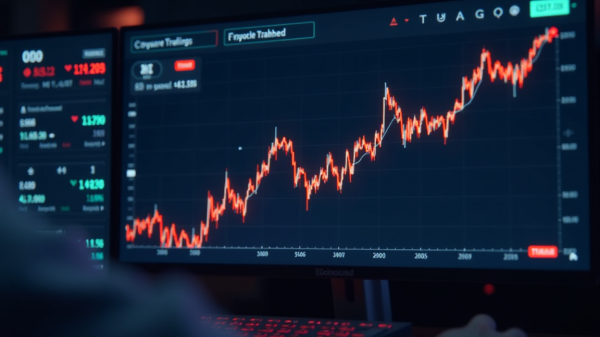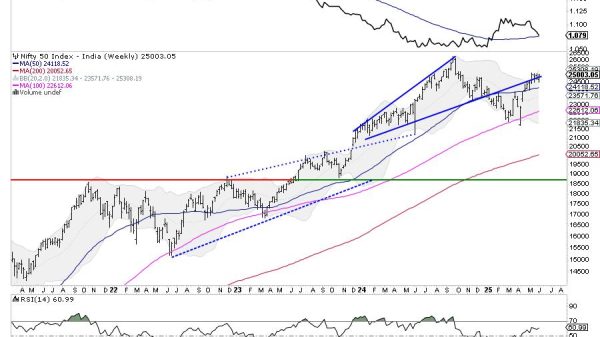Mastering the TRIX Indicator for Enhanced Market Analysis
The TRIX (Triple Exponential Average) indicator is a technical analysis oscillator identifying oversold and overbought markets.
Key takeaways
The TRIX indicator is a technical analysis oscillator utilized to locate oversold and overbought markets. Its history dates back to the 1980s. It is a valuable tool for traders who would like to smooth out market noise and focus on the underlying trend.The TRIX indicator can also be used as a momentum oscillator used in technical analysis, primarily to identify overbought or oversold conditions in a market, as well as to spot divergences that may indicate potential market turning points.
Developed in the 1980s by Jack Hutson, an editor for “Technical Analysis of Stocks and Commodities” magazine, the TRIX indicator is designed to filter out market noise and highlight the underlying trend of an asset’s price.
Role in technical analysis
The main roles of the TRIX indicator in technical analysis are:
Trend identification: It helps identify the direction and strength of a trend. A positive TRIX value usually indicates an uptrend, while a negative value signals a downtrend.
Signal generation: TRIX generates buy or sell signals. A common strategy is to buy when the TRIX crosses above its signal line (often a 9-day EMA of the TRIX) and sell when it crosses below.
Divergence signals: Divergences between the TRIX and the asset’s price can indicate potential reversals. For example, if the price is making new highs but the TRIX is not, it could signal a bearish reversal.
Advantages of TRIX indicator
Reduces false signals: By smoothing price data, TRIX reduces false signals, which are common in volatile markets.
Trend confirmation: Its ability to filter out market noise helps in confirming the strength of a trend.
Flexibility: Traders can adjust the period settings to make the indicator more or less sensitive to price movements.
Divergence identification: TRIX is effective in identifying divergences, which can be critical signals for trend reversals.
Comparison with other indicators
TRIX is often compared with other momentum oscillators like the MACD (Moving Average Convergence Divergence) or the RSI (Relative Strength Index).
While MACD also involves EMAs, it is a more direct comparison of different moving averages, whereas TRIX focuses on the rate of change of a triple smoothed EMA. RSI, on the other hand, measures the speed and change of price movements, providing overbought or oversold signals.
When interpreted as a leading indicator, TRIX is best utilized in conjunction with another market-timing indicator—this minimizes false indications.
MACD
The Moving Average Convergence Divergence (MACD) is a widely used technical analysis tool. It helps traders to identify potential buy and sell signals in the market. Developed by Gerald Appel in the late 1970s, the MACD is a trend-following momentum indicator that shows the relationship between two moving averages of a security’s price.
Components of MACD
MACD Line: Calculated by subtracting the 26-period Exponential Moving Average (EMA) from the 12-period EMA. This line represents the main trend direction and strength.
Signal Line: Typically a 9-period EMA of the MACD line. It acts as a trigger for buy and sell signals.
Histogram: The graphical representation of the difference between the MACD line and the signal line. It provides a visual representation of the convergence and divergence of these lines.
Signal line. It provides a visual representation of the convergence and divergence of these lines.
Role in technical analysis
The MACD serves several roles in technical analysis:
Trend identification: By comparing the MACD line with the signal line, traders can identify the direction of the trend. When the MACD line is above the signal line, the trend is bullish, and when below, it is bearish.
Momentum indicator: The distance between the MACD line and the signal line indicates the strength of the momentum. A wider gap suggests stronger momentum.
Signal generation: Crossovers between the MACD line and the signal line generate potential buy (bullish crossover) or sell (bearish crossover) signals.
Divergence observation: Divergences between the MACD and the price action can indicate potential trend reversals. For example, if the price is making new highs, but the MACD is not, it could signal a bearish reversal.
Relative Strength Index
The Relative Strength Index (RSI) is a momentum oscillator. It is widely used in technical analysis to measure the speed and magnitude of recent price changes to evaluate overbought or oversold conditions in the price of a stock or other asset.
Developed by J. Welles Wilder Jr. in 1978, the RSI is displayed as an oscillator (a line graph that moves between two extremes) and can have a reading from 0 to 100.
Key features of RSI
Standard settings: The RSI is typically set to a 14-period timeframe, which can be adjusted based on the trader’s analysis needs.
Overbought and oversold levels: Traditional interpretation suggests that an RSI value of 70 or above indicates that a security is becoming overbought or overvalued and may be primed for a trend reversal or corrective price pullback. An RSI reading of 30 or below indicates an oversold or undervalued condition.
Importance in technical analysis
Momentum insights: The RSI provides insights into the strength of a security’s price momentum. This can help traders identify the strength behind a trend, whether it’s gaining or losing momentum.
Identifying market conditions: It is particularly useful for signaling potential reversal points in the market by identifying overbought and oversold conditions.
Divergence identification: RSI can also be used to identify divergences.
Complementary tool: The RSI is often used in conjunction with other technical indicators and analysis tools to confirm trends and signal potential entry and exit points.
The RSI’s importance lies in its versatility and simplicity, making it a favored tool among many traders and analysts. It’s effective across various markets and timeframes, though its accuracy can be enhanced when combined with other forms of technical analysis.
While powerful, the RSI should not be used in isolation as it can occasionally produce false signals, particularly in volatile markets or during strong trends where the asset remains overbought or oversold for extended periods.
Technical analysis tools
The Triple Exponential Moving Average (TEMA) is a technical analysis tool that combines a single, double, and triple exponential moving average to smooth price data and reduce lag inherent in traditional moving averages.
It reacts more quickly to price changes, offering a more sensitive and timely indicator for traders. Importantly, it is especially useful when it comes to identifying trends and potential reversals in fast-moving markets. TEMA is often used in combination with other indicators for more accurate trading signals.
Limitations
Let’s return to the TRIX indicator.
Lagging nature: As with many technical indicators, TRIX is lagging. It is based on past data and may not accurately predict future market movements.
Complexity: The triple smoothing can make it more complex and harder for beginners to interpret.
False divergences: Sometimes, TRIX may indicate a divergence that does not result in a trend reversal.
To sum up, the TRIX indicator is a valuable tool for traders who want to smooth out market noise and focus on the underlying trend. Its ability to reduce false signals and identify potential trend reversals makes it a popular choice among technical analysts. However, like all indicators, it is not infallible and works best when combined with other forms of analysis.
The post Mastering the TRIX Indicator for Enhanced Market Analysis appeared first on FinanceBrokerage.

























